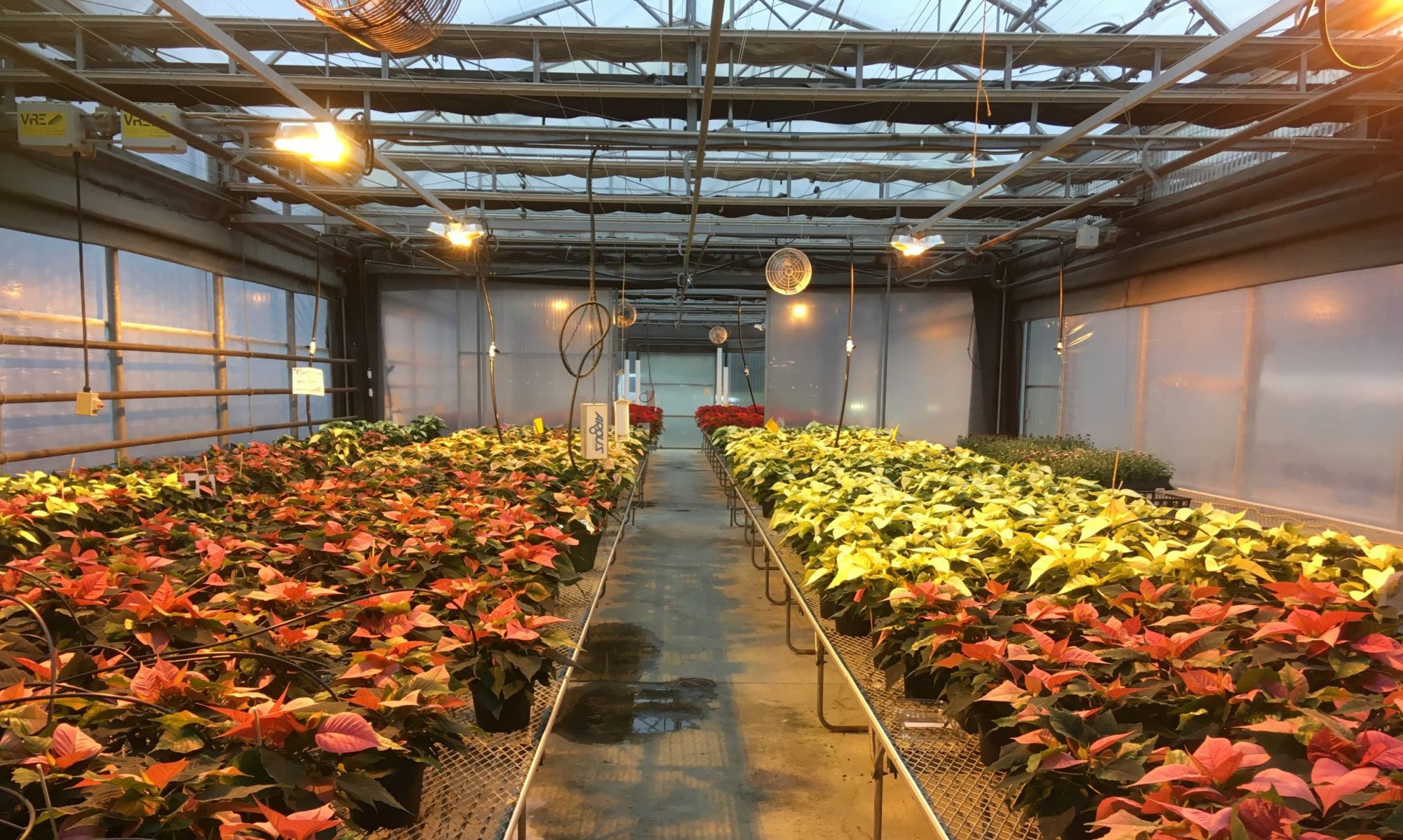Christine’s Grower’s Notes
Week Number: 34
Environmental Conditions:
This week we continued to see extremely high outdoor temperatures early in the week into the late 20’s and early 30’s. It was challenging keep the high humidity (60%-70%) that we require at this stage of development while keeping the greenhouse cool with passive (side and roof) venting. I wet the floors 3-4 times a day to help keep the humidity up.
Later in the week outdoor temperatures dropped giving the plants a reprieve from the intense heat. Due to the lower temperatures, I was able to keep the side walls down which helped to keep higher humidity levels in the greenhouse. Due to the higher humidity I wet the floor 2-3 times a day as required. The lower outdoors temperatures also resulted in the bottom heat turning on and staying on for longer periods. This is ideal since we want to stimulate the roots at the stage in production.
Day:
Sunday – Wednesday: Heating Setpoint 18C Cooling Setpoint 21
Thursday – Onwards: Heating Setpoint 18C Cooling setpoint 24C
Night:
Sunday – Wednesday: Heating Setpoint 18C Cooling Setpoint 21
Thursday – Onwards: Heating Setpoint 18C Cooling setpoint 24C
Supplemental Lighting:
No supplemental lighting until Thursday when lower light levels due to rainy/cloudy weather. I used Argus logic formulas to turn on the High Pressure Sodium (HPS) lights if the outdoor light levels dropped below 200 W/m2 for more than 30minutes between 6am and 8am. Once on, Argus logic formulas were set to determine if light levels raised 50 W/m2 above 200 W/m2 for more than 30 minutes then the HPS lights would turn off between the hours of 6am and 8pm.
This decision was made so that we could maintain our 14hour day and 10 hour night to keep our plants in a vegetative phase. I do not anticipate the lights coming on due to the sunny forecast for the next week.
Hours of Black Out: N/A
Nutrient:
EC target is 1.5 – 2.0 pH target is 5.7 – 6.3
EC: N/A pH: N/A
Watering/Fertilizer:
Over the weekend I spot watered the 4″ and 6″ poinsettias after assessing if they required water. I assessed the plants using pot weight and visual inspection of soil colour (lighter colour means the soil is drying down). I also tipped the poinsettias out of the pot and pressed the inside of my wrist and lower forearm (due to higher sensitivity in this area compared to inside of my hand) against the root ball to determine if there was moisture left in the soil. This method also allows me to assess root development while assessing soil moisture.
The students determined the poinsettias required water in our face to face class on Tuesday, August 19. The students watered the poinsettia crop at 200ppm Calcium Nitrate (CaN03) with an injection rate of 1:100 until the excess fertilizer solution ran out of the bottom of the pot. It is essential that we perform watering practices this way to discourage salt build up in the soil and encourage water and root movement through the soil.
Observations:
High outdoor temperatures this week were challenging given our current goals of keeping the humidity and root temperatures up for our crop. Lower outdoor temperatures later in the week were welcomed. Even with the less than ideal high temperatures I still saw some vegetative growth in the crop. Without seeing the root zone, increased vegetative growth indicates to me that there would likely be root development to support the vegetative growth. The fans are on to help with air circulation and the shade cover is extended so that the crop is protected from direct sun exposure.
This week we predicted we would see some root development in our crop – AND WE DID! We (carefully) destroyed 6 plants to determine where exactly the roots were in the soil exactly one (1) week after planting. To our delight the roots in many of the plants were half way down the pot – right on track for pinch. Later in the week, on August 21 to be exact, I was assessing root growth and was extremely pleased to see the roots in all varieties has reached the edge of the pot. I want to fertilize with our Calcium Nitrate (CaN03) fertilizer before pinch to push the roots a little more.
Moving forward into next week I an anticipating the pinch, which that students will practice on Tuesday and Thursday (August 25 and 27). We will assess the plants and determine which type of pinch we will use, hard or soft and then practice on the crop. Given the excellent root growth I would say we are on track, so far, to meet our production sale date of December 1. We need to be aware of the high humidity levels required after pinching to ensure the newly wounded plants do not desiccate (dry out) from the stress of the pinch.
So far I have received one (1) order from Kleijn’s Nursery and one (1) inquiry from a community group for our poinsettia fundraiser.



